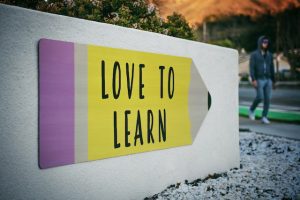Edu-Fun and Hacks: Discover Intriguing Facts about Enhancing Learning
In the modern educational landscape, students are constantly seeking innovative ways to enhance their learning experiences. This article reveals some intriguing facts about educational hacks like OnlineResearchPaperWriter, the science of fun in learning, novel strategies for academic success, and ways to transform classroom boredom into engagement.
Educational Hacks that Every Student Should Know
Education, while essential, may sometimes come with its challenges. Students often find themselves overwhelmed by the sheer amount of information they need to absorb. This section provides some practical and effective educational hacks that every student should know.
One hack that students should consider is the Pomodoro Technique. This time management method involves breaking down study time into 25-minute intervals separated by short breaks. The idea behind this technique is that frequent breaks can improve mental agility. It’s a simple yet effective way to manage study time and maintain focus.

Another educational hack revolves around the use of mnemonic devices. These are techniques that help in memorizing information by associating it with easy to remember constructs. Mnemonic devices are particularly useful when studying complex subjects as they simplify the learning process. These devices could take the form of acronyms, visual imagery, or rhymes.
Lastly, active recall is a study strategy that involves actively stimulating memory during the learning process. Instead of merely re-reading the study material, students should close the book and recite the information learned. This hack aids in retaining information for a longer time period.
The Science of Fun: How Enjoyment Aids Learning
The premise “all work and no play makes Jack a dull boy” holds true in the field of education. The science of fun reveals that enjoyment aids learning. This section explores how fun impacts the learning process.
Fun in learning triggers the release of dopamine, a neurotransmitter that plays a crucial role in learning and memory. When a student is having fun while learning, the brain releases dopamine, which not only makes the student feel good but also boosts their memory retention. This phenomenon is often referred to as “the dopamine effect”.
Additionally, incorporating fun into learning can reduce anxiety and stress, which are common barriers to effective learning. When learners are relaxed and enjoying the process, they are more likely to absorb and retain information. Games, experiments, and interactive activities are some of the ways to introduce fun into learning.
Moreover, fun in learning promotes creativity and critical thinking. Engaging activities stimulate the brain, encouraging students to think outside the box. It fosters a love for learning, and students become more inclined to explore and understand new concepts.

Novel Learning Strategies for Academic Success
Academic success is not solely about intelligence; it’s also about the strategies employed during the learning process. This section underlines some novel learning strategies for academic success.
One strategy is the use of digital tools for learning. With the advent of technology, a variety of educational apps and platforms are now available. These tools are designed to provide interactive and engaging learning experiences, making the educational process more efficient and enjoyable.
>Another effective strategy is collaborative learning. This involves students working together to solve problems or complete tasks. It encourages communication, fosters a sense of community, and allows students to learn from each other. It’s a strategy that not only enhances academic skills but also social skills.
Furthermore, self-regulated learning is a strategy that empowers students to take charge of their own learning. It involves setting goals, monitoring progress, and reflecting on outcomes. It fosters autonomy and equips students with skills that are essential for lifelong learning.

Turning Classroom Boredom into Engagement
Classrooms are the primary learning environment for students. However, traditional teaching methods can sometimes lead to boredom. This section discusses ways of turning classroom boredom into engagement.
One method is through active learning. This approach involves students actively participating in the learning process rather than being passive recipients of information. It can be achieved through discussions, problem-solving activities, or hands-on experiments. Active learning makes lessons more engaging and promotes better comprehension.
Another way to enhance classroom engagement is through differentiated instruction. This teaching method involves customizing instruction to meet the diverse needs of students. It can involve varied teaching styles, learning materials, or assessment methods. Differentiated instruction ensures that all students are catered to, promoting engagement and inclusion.

Lastly, integrating real-world examples into lessons can increase classroom engagement. When students can relate what they’re learning to real-life scenarios, they find the lessons more relevant and engaging. It bridges the gap between theory and practice, making learning more meaningful.
In conclusion, enhancing learning is achievable through educational hacks, understanding the science of fun, employing novel learning strategies, and transforming classroom boredom into engagement. As students navigate the ever-evolving educational landscape, these approaches will prove invaluable in their quest for academic success.
This page was last modified on September 4, 2023. Suggest an edit









